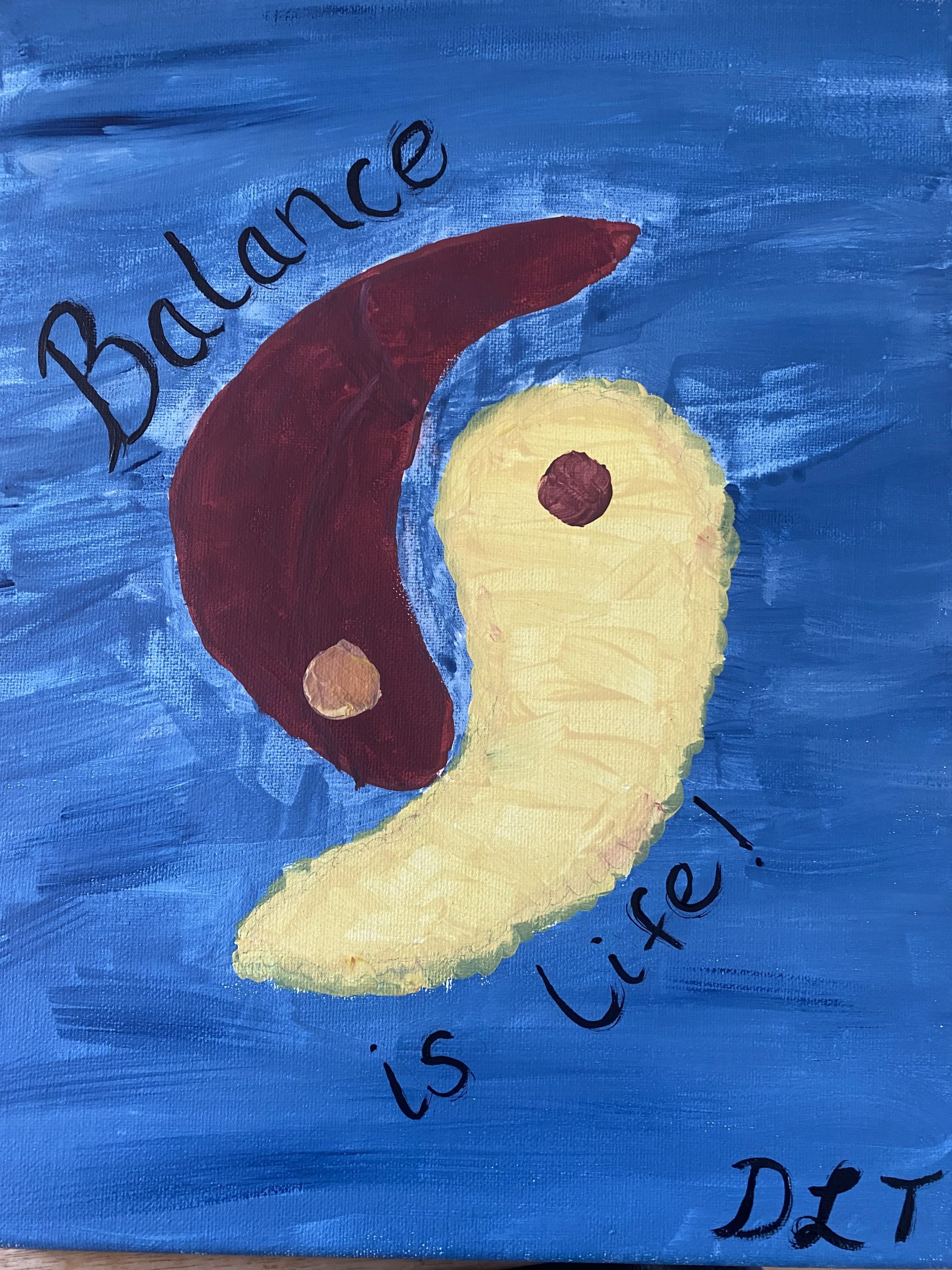
I chose to depict the liver and pancreas in a yin yang symbol to show that the two organs work together to balance the glucose and insulin in the body. Specifically I researched hypoglycemia in non-diabetics and how this rare condition affects these organs. If these organs don’t work in tandem to control the blood sugars, the patient can become either hypoglycemic or hyperglycemic. One without the other, would result in a medical emergency.

Danelle’s project is on the teamwork between the pancreas and the liver to balance glucose and insulin in the body. Her painting depicts the two organs as yin and yang to symbolize their role in keeping the balance. In her paper, she goes into detail about how the pancreas produces insulin to maintain levels of glucose. Meanwhile the liver stores excess sugar in the form of glycogen. She goes onto explain that when the body is not being fed and the blood sugars start to drop, the liver turns this stored glycogen into glucose through a process called glycogenolysis. The next step, if the body is continuously not fed, the liver will begin using fat.
Danelle also highlights that while hypoglycemia, lower than normal blood sugar, is a common complication of diabetes, there is also a disease that can also be the cause of hypoglycemia. One of these diseases she mentioned is called postprandial hypoglycemia. This is when, roughly 4 hours after a meal, the pancreas “dumps” an overload of insulin, causing a sharp and sudden drop in the blood sugar levels.
For her project, Danelle did a great job explaining the cause of hypoglycemia, along with its symptoms. She also talked about how both hypoglycemia and hyperglycemia are both medical emergencies and require immediate medical attention.
Overall, the project was very well put together and in great detail. Her painting was beautifully done, and I really enjoyed the symbolism behind it.